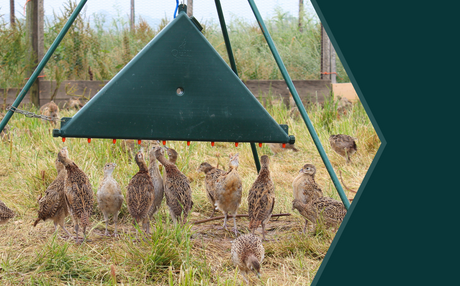Studies have shown that 29% of illness in calves can be linked to naval associated issues.
When the umbilical cord is cut after birth, the naval if left untreated provides an easy gateway for bacteria and disease to enter the calves blood stream.
At this point the calf has little to no immunity, and if preventative steps are not taken, naval infections can easily take hold. These infections will usually impact weight gain in the first 3 months and can even be fatal if left untreated.
To avoid naval issues taking place, two key areas must be addressed.
1) First the naval must be disinfected and allowed to heal so that the barrier for potential infection is closed.
Naval Care
Typically in the past, iodine in a naval cup or antibiotic spray have been used to disinfect calf's navals. Due to antibiotic resistance, many have moved away from the latter option, however iodine is still a popular choice.
There are however, several disadvantages to using iodine for naval care:
- Naval cups often cause cross-contamination of disease
- Product wastage when using naval cups
- Iodine is irritating to skin and dangerous by inhalation
Intra Repiderma spray contains chelated minerals & adhesive, meaning that it works to prevent infection whilst actively sealing the naval & promoting healing.
As Intra Repiderma is applied with a pressurised aerosol spray, application is fresh and no refilling is necessary. There is also limited waste, as the product is sprayed directly on the targeted area. According to trials, Iodine is 25% more expensive than Intra Repiderma per application.
2) The other key area to address for naval concerns is house biosecurity.
Housing Biosecurity
It is crucial that the calves environment is kept clean & dry. Slats must be throughly cleaned and disinfected, and plenty of straw must be used to soak up moisture.
We recommend layering bedding with an absorbent disinfectant powder like Quill Clean & Dri Disinfectant Powder to soak up any moisture and kill pathogens.
When cleaning out calving pens & birthing pens, it is crucial that a thorough 2-step cleaning protocol is used to kill all harmful bacteria, viruses & fungi. Birthing pens should be completely cleaned and disinfected after each birth to maintain a high level of hygiene.
To tackle longstanding issues like Coccidiosis & Cryptosporidium oocysts, we recommend using a foaming cleaner like Target™ Powergel followed by a disinfectant like GPC8™.
View our Coccidiosis & Cryptosporidium reduction protocol here.
What are your tips for successful naval care during calving? Let us know by leaving a comment below.









